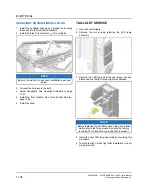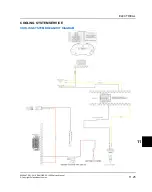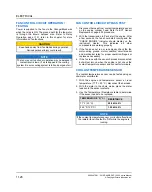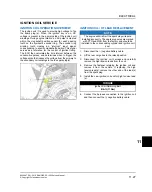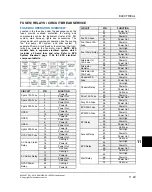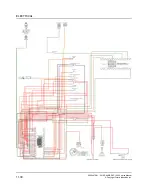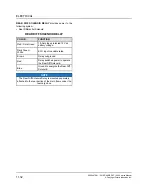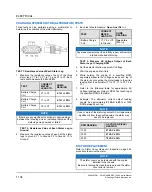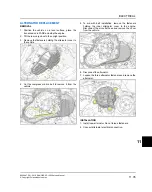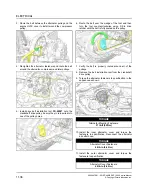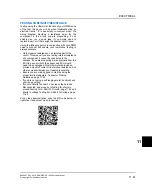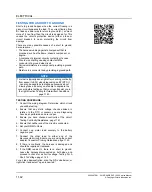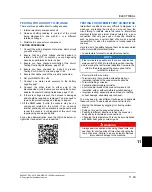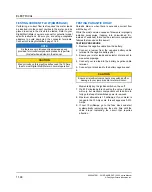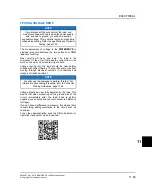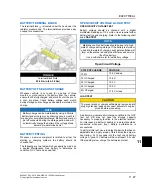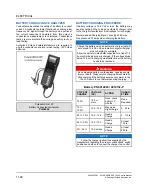
9928487 R01 - 2018 RANGER XP 1000 Service Manual
© Copyright Polaris Industries Inc.
11.33
CHARGING SYSTEM SERVICE
CURRENT DRAW - KEY OFF
CAUTION
Do not connect or disconnect the battery cable or
ammeter with the engine running. Damage will occur to
electrical components.
NOTE
Charging system damage will occur if incompatible
components are installed. Always reference Polaris
Electric Parts Catalog for proper part numbers.
Connect an ammeter in series with the negative battery
cable. Check for current draw with the key off. If the draw
is excessive, loads should be disconnected from the
system one by one until the draw is eliminated. Check
component wiring as well as the component for partial
shorts to ground to eliminate the draw.
Current Draw - Key Off (Max):
.01 DCA (10 mA)
CHARGING SYSTEM “BREAK EVEN” TEST
CAUTION
Do not allow the battery cables to become
disconnected with the engine running. Follow the steps
below as outlined to reduce the chance of damage to
electrical components.
The “break even” point of the charging system is the
point at which the alternator overcomes all system loads
(lights, etc.) and begins to charge the battery. Depending
on battery condition and system load, the break even
point may vary slightly. The battery should be fully
charged before performing this test.
WARNING
Never start the engine with an ammeter connected in
series. Damage to the meter or meter fuse will result.
Do not run test for extended period of time. Do not run
test with high amperage accessories.
1.
Using an inductive amperage metering device, (set
to DC amps) connect to the negative battery cable.
2.
With engine off, and the key switch and lights in the
ON position, the ammeter should read negative
amps (battery discharge). Reverse meter lead if a
positive reading is indicated.
3.
Shift transmission into Park and start the engine.
With the engine running at idle, observe meter
readings.
4.
Increase engine RPM while observing ammeter and
tachometer.
5.
Note RPM at which the battery starts to charge
(ammeter indication is positive).
6.
With lights and other electrical loads off, the “break
even” point should occur at approximately 1500 RPM
or lower.
7.
With the engine running, turn the lights on and press
the brake pedal to turn the brake lights on.
8.
Repeat test, observing ammeter and tachometer.
With lights on, charging should occur at or below
2000 RPM.






